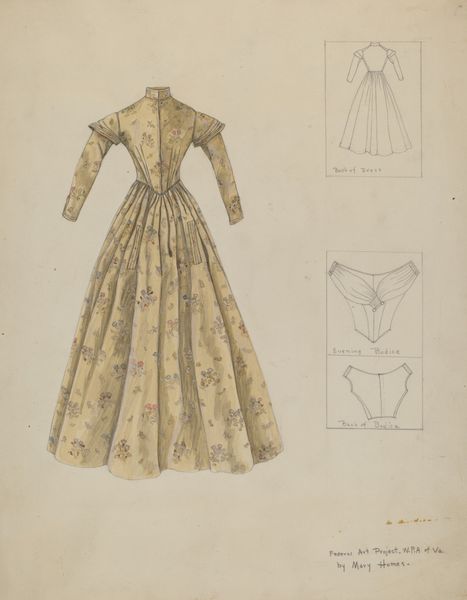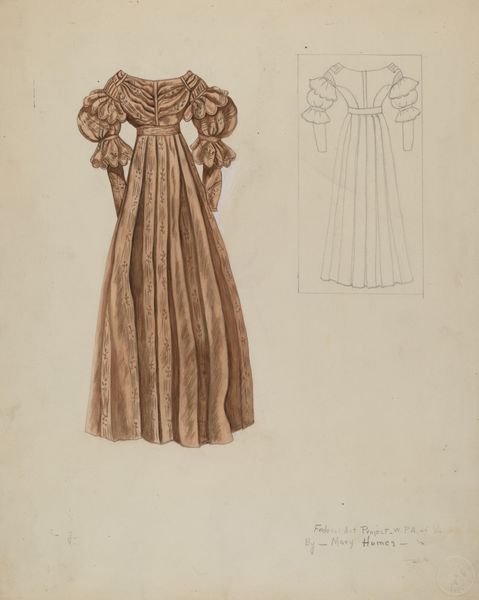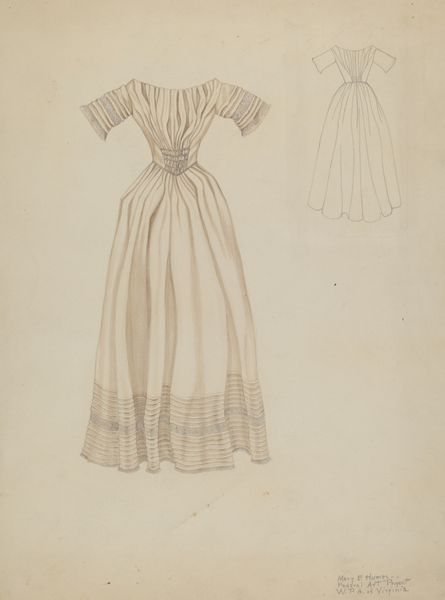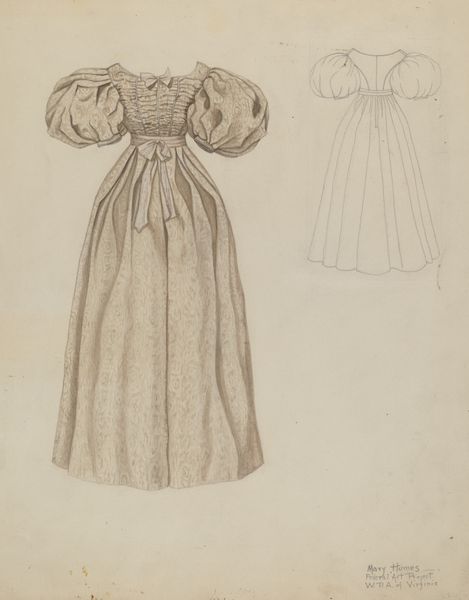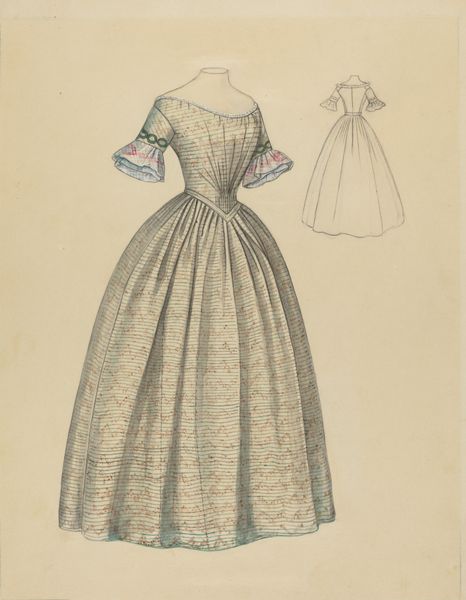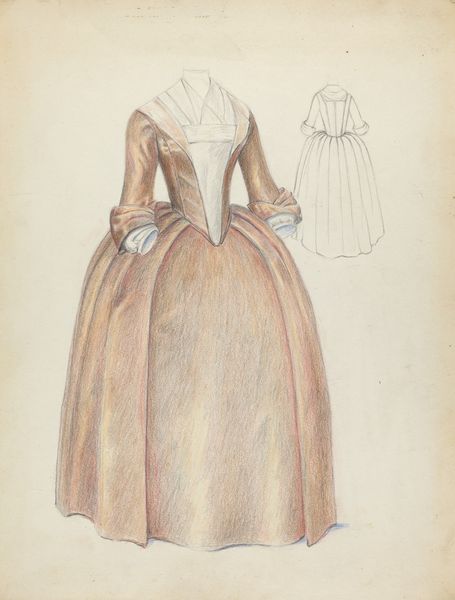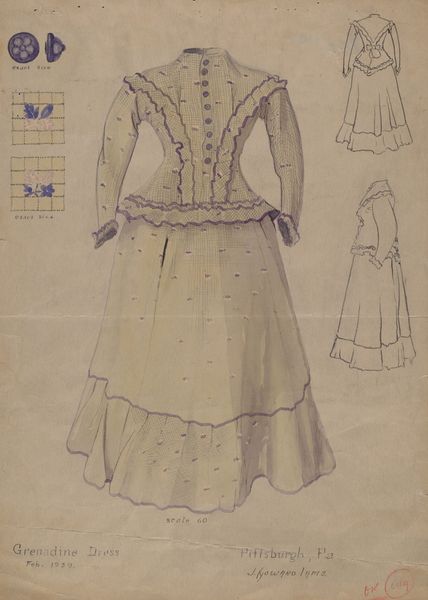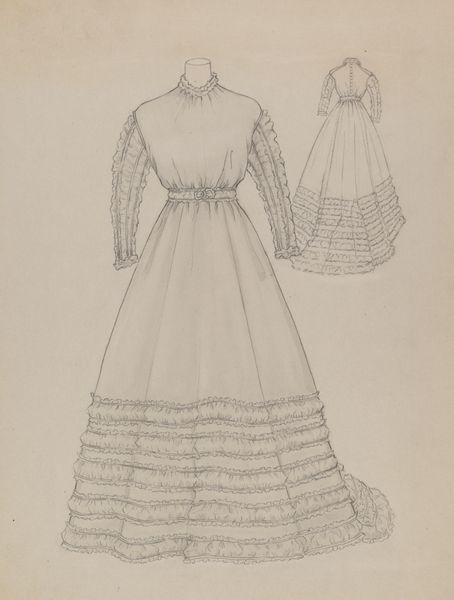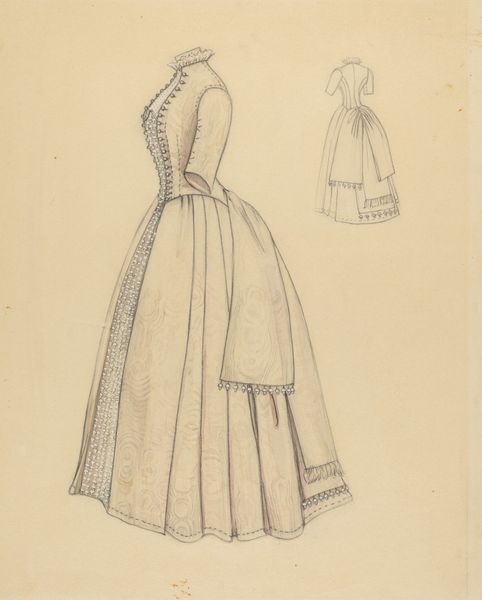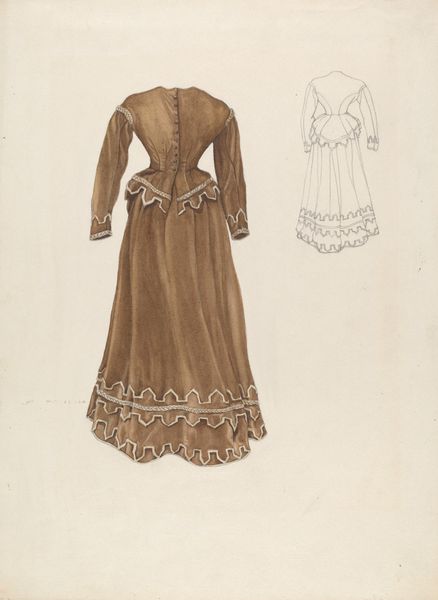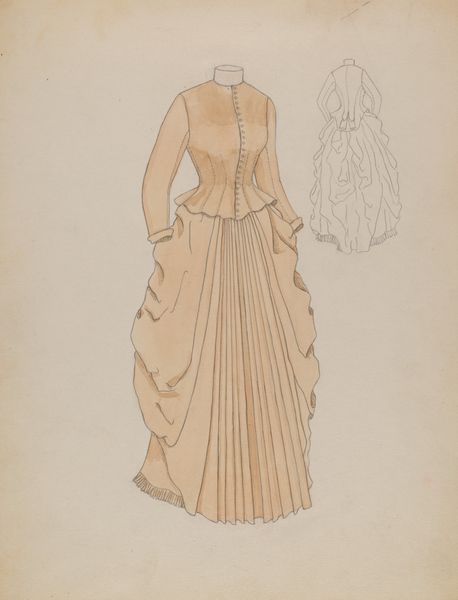
drawing, paper
#
fashion design
#
drawing
#
underwear fashion design
#
light pencil work
#
fashion mockup
#
paper
#
personal sketchbook
#
historical fashion
#
traditional dress
#
sketchbook drawing
#
fashion sketch
#
clothing design
Dimensions: overall: 35.8 x 28 cm (14 1/8 x 11 in.)
Copyright: National Gallery of Art: CC0 1.0
Editor: This is a design sketch from around 1937 by Mary E. Humes, titled "Dress," rendered with what looks like pencil and perhaps watercolor on paper. The full-length dress feels almost nostalgic. I see echoes of earlier Victorian styles. How might its creation be read in relation to its socio-historical context? Curator: Good observation. Considering this was created as part of the Federal Art Project under the WPA, its function transcends simple fashion design. These weren’t just sketches; they were visual documents, contributing to a larger archive of American design and craft. The WPA aimed to document and preserve American skills during a period of economic hardship. Does that change your perception? Editor: Absolutely, it recontextualizes the piece entirely. I’d been looking at it as an isolated aesthetic object, and missed that it was conceived and supported by government infrastructure with broader objectives! Were these designs ever actually produced, or was it all about documentation? Curator: Some designs were indeed prototypes, with the hope of stimulating the textile industry. But more broadly, it was about cultural preservation and job creation. The fact that Humes, as the artist, received a government wage to create such sketches shows how fashion, like art, was recognized for its cultural and economic value. Look closely, what details speak to a larger audience beyond wealthy clientele? Editor: Hmm, I notice the design itself seems quite practical and modest. So instead of envisioning this in isolation, or purely as aspirational design, I should think about it as part of the collective effort, a public good almost? Curator: Exactly! The project democratizes art, positioning it as a resource accessible to everyone. Thinking about it now, what comes to mind? Editor: That fashion, even historical fashion as depicted here, can reflect national values and the socio-political currents of its time, and that’s critical for analyzing it with historical tools. Thanks!
Comments
No comments
Be the first to comment and join the conversation on the ultimate creative platform.
